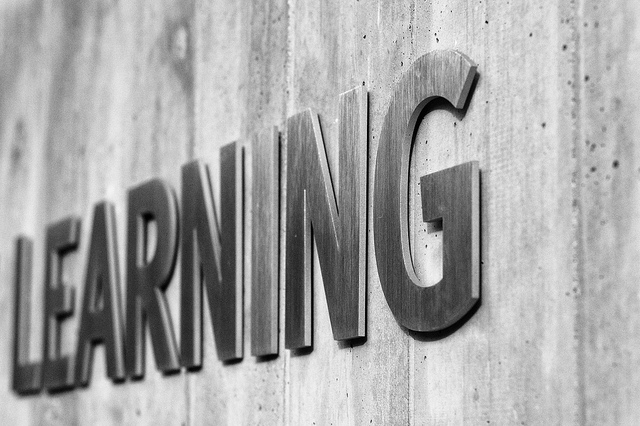 In education, there are various learning approaches that students will encounter over their time in schools. There isn’t necessarily a “best” learning approach, but unique variations to each approach that give students opportunities to learn and strive for competency of the content being taught. The experiential learning approach is one that I decided to focus on and learn more about. Experiential learning is the process of learning through experience, and more specifically learning through reflection of doing. This learning approach is important because it is a more modern approach to learning in contrast to the traditional didactic or lecture style of teaching and instruction. In experiential learning students partake in a form of active learning, unlike the passive role they play in traditional rote learning where the teacher may just lecture or present information to the student. In this approach, the student relies solely on memorization to learn, which we have discovered is not the most effective method of learning.
In education, there are various learning approaches that students will encounter over their time in schools. There isn’t necessarily a “best” learning approach, but unique variations to each approach that give students opportunities to learn and strive for competency of the content being taught. The experiential learning approach is one that I decided to focus on and learn more about. Experiential learning is the process of learning through experience, and more specifically learning through reflection of doing. This learning approach is important because it is a more modern approach to learning in contrast to the traditional didactic or lecture style of teaching and instruction. In experiential learning students partake in a form of active learning, unlike the passive role they play in traditional rote learning where the teacher may just lecture or present information to the student. In this approach, the student relies solely on memorization to learn, which we have discovered is not the most effective method of learning.
A classroom that participates in experiential learning is filled with active students, either physically, mentally, or both. Hands-on activities and other activities that fit within the kinesthetic teaching style can be a big part of the experiential learning approach as long as there is an opportunity for students to reflect on these activities. Physical learning activities are many times associated with experiential learning because of the experience from taking in part in a lesson or activity. The activity alone does not facilitate any learning, but in fact the reflection on the activity is the source of the learning. Students reflect on what went right and what didn’t. After the reflection, students conceptualize what changes need to be made to be successful and how they will go about making these changes. This step in the experiential learning process solidifies the learning for the student.
Check out the video below to see the experiential learning approach in action!
https://www.teachingchannel.org/videos/experiential-learning-with-science/
As a teacher, I would choose to incorporate this approach in my classroom because of the many benefits it can provide for my students. This learning approach is beneficial because it allows students to gain experience doing and applying the theories or concepts they have learned in the classroom to real world problems or situations. Experiential learning is also effective in meeting the criteria to enable personalized learning for students. Students are allowed to work at their own pace and pursue their interests, increasing overall engagement and retention of content.
Links to three great educators’ Twitter profiles. Follow and see how they are utilizing the experiential learning approach in their teaching!
Check out this great blog post on the experiential learning approach. Great insight for those looking to learn!
http://blog.waldorfeducation.org/2017/03/experiential-education/
For more information on experiential learning also follow the link below to a very informational article on this unique learning approach.

Sometimes experiencing things is a lot better than actually learning things in some cases. I think that is an interesting approach to learning because there are some students who do learn that way. I did my research on personalized learning and this could probably be incorporated in that since it tends to what the students need.
LikeLike
Gaining experience by doing is more likely to increase learning and bridges the gap between theory and application of content. Many students, like many others, learn by doing and not just hearing and seeing something be done.
LikeLike
This sounds like such a neat way to learn, through reflection. That’s what us as teachers do with our lesson plans when we recap what worked with students and what didn’t so it makes sense to have students recap in the same way for a lesson they have worked on. I think this could be harder for audio and visual learners though as this seems more like a kinesthetic way of learning as the tasks would be more hands on rather than the memorization that students have become used to.
LikeLike
Reflection can be done visually and kinesthetic through writing, or it can be done through partner and group discussion to hit the auditory learning style of some students. Having creativity to prompt reflection among students will increase learning.
LikeLiked by 1 person
Before this class I personally had never heard of Experiential Learning. From reading you blog post I believe it is great approach to use in the classroom. I personally like any approach that gives an option for hands on work (I hate lecturing)! Thank you for sharing, great post!
LikeLike
I really like the experiential learning approach because I have been exposed to it throughout my middle and high school career. I have created a habit on reflecting on my work as it allows me to be consistent, and also helps me truly identify what I need to improve.
LikeLike
I really like your post because I also picked experiential learning. This is personally my favorite because it gets the students up and moving and it is more hands on than a traditional classroom setting.
LikeLike
Yes, it can prompt more hands-on activities for your students to do, but the secret ingredient in this approach is teaching students how to reflect on their own work. Giving them ample time to do so consistently will also demonstrate improvements in student’s learning over the content being covered.
LikeLike